MotoGP 2022: Can Márquez reclaim his crown?
Many people declared the Marc Márquez era to be over following his rash of injuries, but is it? Plus plenty more thoughts on the 2022 MotoGP season, which kicks off in Qatar on Sunday
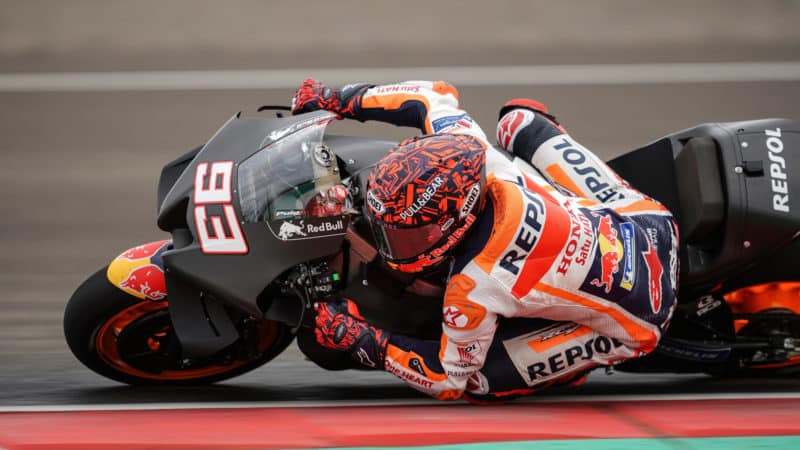
Márquez and Honda’s all-new RC213V. The bike requires a slightly different riding style but he’s already got the hang of it
Honda
The final afternoon of last month’s opening pre-season tests at Sepang was interrupted by a tropical downpour. Everyone took refuge in the pits, apart from a few rookies, trying out MotoGP bikes on rain tyres for the first time. With an hour to go the track was drying, so a few more riders ventured out for some slow-ish laps on slicks, probably only any use for trying different torque maps and so on.
And then a different noise – the yowl of a V4 in full-attack mode. It was Marc Márquez, head buried in the cockpit of his Honda RC213V, lapping just a couple of seconds outside the lap record, on a damp track. In other words, he’s as hungry as ever.
The last three years of Márquez’s life have been cursed by injury and half a dozen major operations. For more than one year of that period he wasn’t even allowed near a motorcycle.
When a racer gets hurt it’s not just the long days of suffering in hospital, it’s the days, weeks and months at home, doing pretty much nothing. Bored out of your mind and scared too: will my body ever be good enough to race again?
That’s when the doubts gnaw away inside, when you’re just a passenger to your healing system, when inner voices keep asking: “what kind of life is this?”
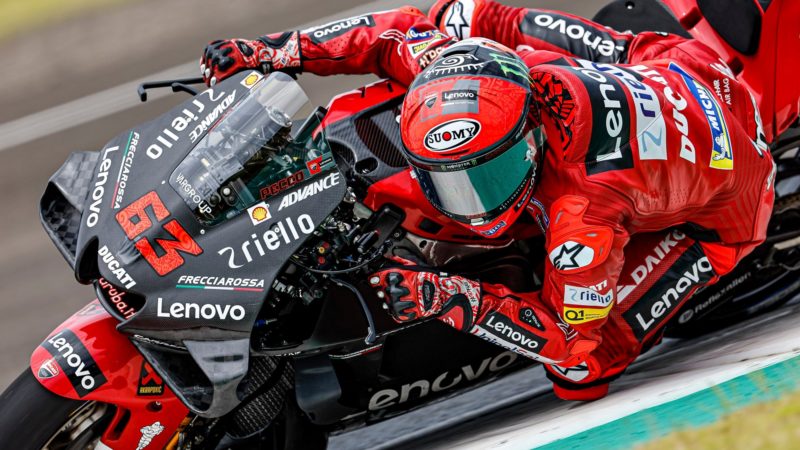
Pecco Bagnaia in particular and Ducati as a whole will most likely be Márquez’s biggest problem
Ducati
At the end of 2018 Márquez had his left shoulder rebuilt, leaving him fighting to get fit for the start of the 2019 season. At the end of 2019 he had his right shoulder rebuilt. Then he crashed out of the first race of 2020, breaking his right arm. Three operations followed – a double dose of pins, plates and finally a bone graft – which kept him out of racing for nine months. At various moments during that time he thought he’d never race again.
Márquez returned in April 2021, won his first race since 2019 two months later, soon followed by two more victories. Then he crashed a dirt bike, giving him double-vision problems – another potentially career-ending injury – which kept him off bikes for another three months.
During his first rides in five months, at Sepang and Mandalika, he was pretty much as fast as anyone and seemed the same Márquez – utterly focused, quietly going about his work, ready to unleash hell when the starting lights go out on Sunday.
After the Mandalika tests he tweeted, “I need more motorbike”.
There is no doubt that Márquez’s body isn’t made from Kryptonite, but his head and his heart just may be.
And there is no doubt that if he fights back from all this to win a seventh MotoGP title his will be the greatest comeback in GP history.
Will he though? Some people say MotoGP has moved on since he won his last title in 2019 (the greatest premier-class campaign in history).
True, there’s been plenty of new winners since: Pecco Bagnaia, Brad Binder, Jorge Martin, Jack Miller (first dry win), Joan Mir, Franco Morbidelli, Miguel Oliveira and Fabio Quartararo.
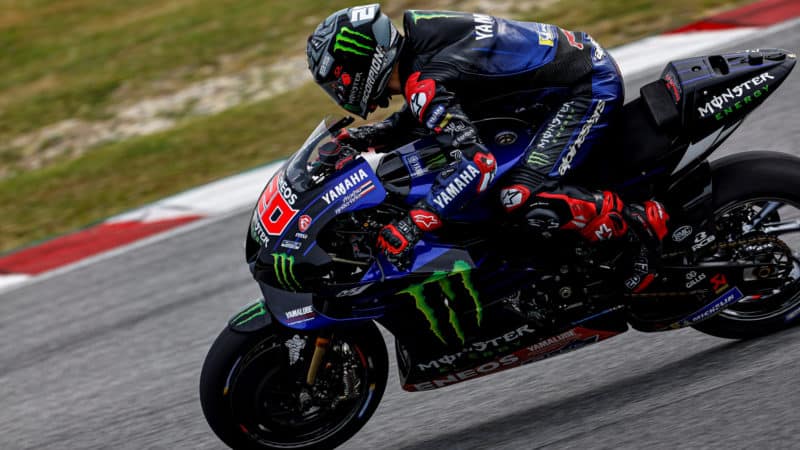
Reigning champion Quartararo will have to fight harder than ever to beat the V4 hordes
Yamaha
And things have changed. Well, one thing has changed. It’s impossible to underestimate the effect of Michelin’s new-for-2020 rear slick, with a softer construction that immediately favoured the sweet-cornering inline-fours over the more aggressive V4s.
The tyre helped Mir and Quartararo to the 2020 and 2021 titles, while Ducati took until some way through last season to fully adapt its Desmosedici to the tyre and Honda had to build a completely new RC213V for 2022 to work with the tyre.
This slick also lasts longer – a softer construction gives a larger contact patch, so the tyre doesn’t build up heat so badly. Over the past two seasons many race records have been smashed (Mugello by 17 seconds, Losail by 13, Catalunya by eight, Misano and Valencia by seven), but I think this is the tyre more than the riders.
So I’m sure Márquez will race up front again, just as he did last year when he won at Sachsenring, COTA and Misano. The competition will be stronger, because the old warhorses have mostly been replaced by younger, hungrier riders, so the fights may be bigger, which begs the question: does Márquez still have the same killer instinct? Or to put it another way, do bears shit in the woods?
Márquez may be 29-years-old – 18 of this year’s 24 MotoGP riders are younger than him! – but he still lives for the battle, so the new generation will need to work out ways to beat him in those final laps. Bagnaia did it at Aragon last year, but so far he’s the only new winner to have beaten the six-times MotoGP king in a head-to-head.
Of course, there are still doubts. During pre-season testing Márquez struggled with strength in his right arm, which during a motorcycle-free winter lost much of the muscle he had built up last season, so how strong will he be at the opening races? And will his double-vision problems return?
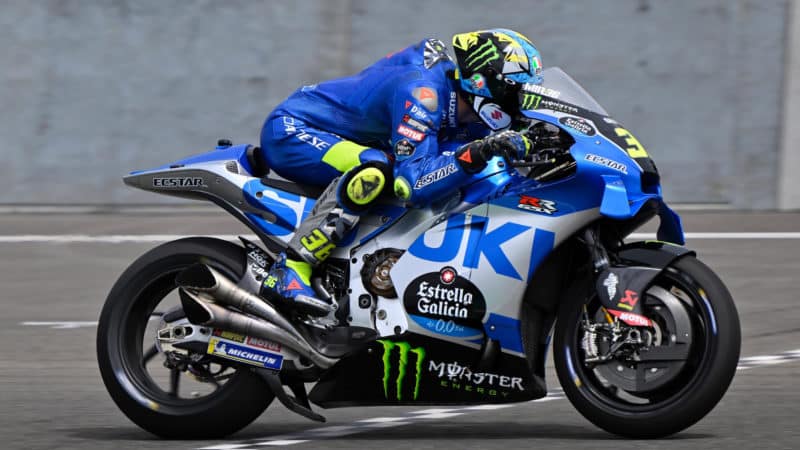
Suzuki has some found much-needed top speed for 2022, but will it be enough?
Suzuki
And what of everyone else?
Bagnaia has achieved a state of perfection in his riding of the Ducati. And at the end of last season – after five poles and four wins from the last six races – he said the bike was perfect. I don’t think I’ve ever heard a GP rider say such a thing in more than three decades of covering the world championships, so it means a lot.
Bagnaia should be Márquez’s biggest rival. Or should I say Ducati will be Márquez’s biggest rival? The Italian factory currently has the fastest motorcycle and an embarrassment of riches in rider talent, the like of which the premier-class has never seen. There are seven other riders on GP22 and GP21 machines, and four of them – Enea Bastianini, Jorge Martin, Jack Miller and Johann Zarco – could win races in 2022.
Eight Desmosedicis – super-quick in qualifying and super-fast over race distance – could change the whole dynamic of MotoGP. If the bikes dominate the front of the grid it’s hard to see how riders of Suzuki’s and Yamaha’s less-powerful inline-fours will be able escape the clutches of the faster V4s so they can find the room to exploit their corner-speed advantage.
Mir, Morbidelli, Quartararo and Álex Rins all know how complicated it is to beat one Ducati, let alone two or three, when you have to attack and defend at the same time. Suzuki has found more top speed for 2022, while Yamaha hasn’t, but this could be a very frustrating season for all of them.
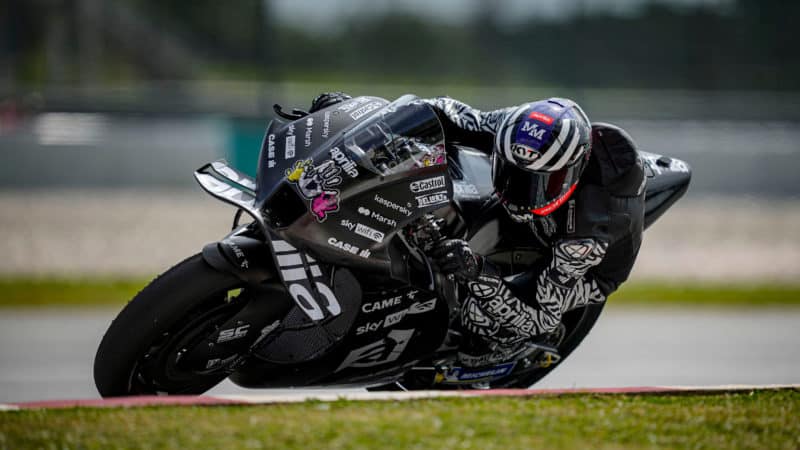
The 2022 RS-GP has huge top speed – could this finally be Aprilia’s year to win a race?
Aprilia
This leaves Márquez’s Repsol team-mate Pol Espargaró, Aprilia and KTM to consider.
The younger Espargaró topped pre-season testing at Mandalika and seems fully fired up on the all-new RC213V. He says the bike is faster and safer, because he no longer has to rely on exploiting the old bike’s corner-entry advantage, which required taking big risks with Michelin’s front slick.
It’s worth noting here that Márquez’s annual crash rate nearly doubled when MotoGP switched from Bridgestone to Michelin, from an average of 13 in 2013/215/2015 to 22 in 2016/2017/2018.
One hundred miles north of Bologna, Aprilia has been doing great work in Noale. The factory has climbed a steep upward curve since 2020, when it followed the Ducati and Honda way by building a 90-degree V4.
Finally, Aprilia has a chance of racing for regular podiums. The 2022 RS-GP is a rocketship – at both the Sepang and Mandalika it was the second fastest bike through the speed traps, just 1.3mph down on the Ducati at Sepang. And the bike handles beautifully, somehow combining the best of the V4 and inline-four configurations.
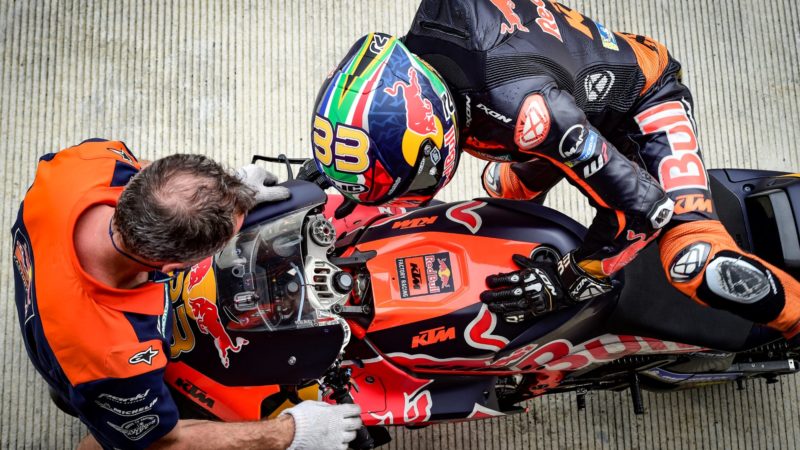
Brad Binder and KTM – they were off the pace in pre-season testing
Red Bull
Aleix Espargaró, contesting his sixth season with the brand, is a great fighter. New team-mate Maverick Viñales is a confirmed winner, when his head is in the right place. Perhaps he’ll find a Latin team more agreeable than a Japanese team, in which case he may soon be back to his best.
One last thing about Aprilia – it’s now the only factory with concessions, which means it can upgrade its engine as often as it likes and go testing as often as it likes with its full-time riders, which the other factories can’t.
Finally, KTM, which had an up-and-down 2021, due to a change in Michelin’s front-tyre allocation and lead-rider Oliveira’s mid-season injury. The Austrian factory lost its way as a result – throwing parts and settings at the RC16 in its efforts to get out of the hole. During the winter KTM engineers decided to take a different approach, working on the details, rather than attempting wholesale changes.
Nevertheless, pre-season testing didn’t go brilliantly, due to ongoing problems with corner-exit traction. Binder and Oliveira ended Sepang and Mandalika around half a second off the pace, which roughly translates into a 12-second deficit over race distance. That’s usually a finish somewhere around the lower half of the top ten, which isn’t the kind of result KTM is chasing.
Pre-season testing top speeds
Sepang
| Position | Team | Rider | Speed |
| 1 | Ducati | Johann Zarco | 208.3mph/335.4kmh |
| 2 | Aprilia | Maverick Viñales | 207.0mph/333.3kmh |
| 3 | Suzuki | Joan Mir | 205.7mph/331.4mkph |
| 4 | Honda | Marc Márquez | 205.6mph/331.0kmh |
| 5 | KTM | Brad Binder | 205.1mph/330.3kmh |
| 6 | Yamaha | Fabio Quartararo | 203.2mph/327.2kmh |
Mandalika
| Position | Team | Rider | Speed |
| 1 | Ducati | Johann Zarco | 195.5mph/314.8kmh |
| 2 | Aprilia | Maverick Viñales | 192.2mph/309.4kmh |
| 3 | Honda | Marc Márquez | 192.2mph/309.4kmh |
| 4 | Suzuki | Álex Rins | 191.6mph/308.5kmh |
| 5 | KTM | Miguel Oliveira | 190.6mph/306.8kmh |
| 6 | Yamaha | Fabio Quartararo | 189.4mph/305.0kmh |

